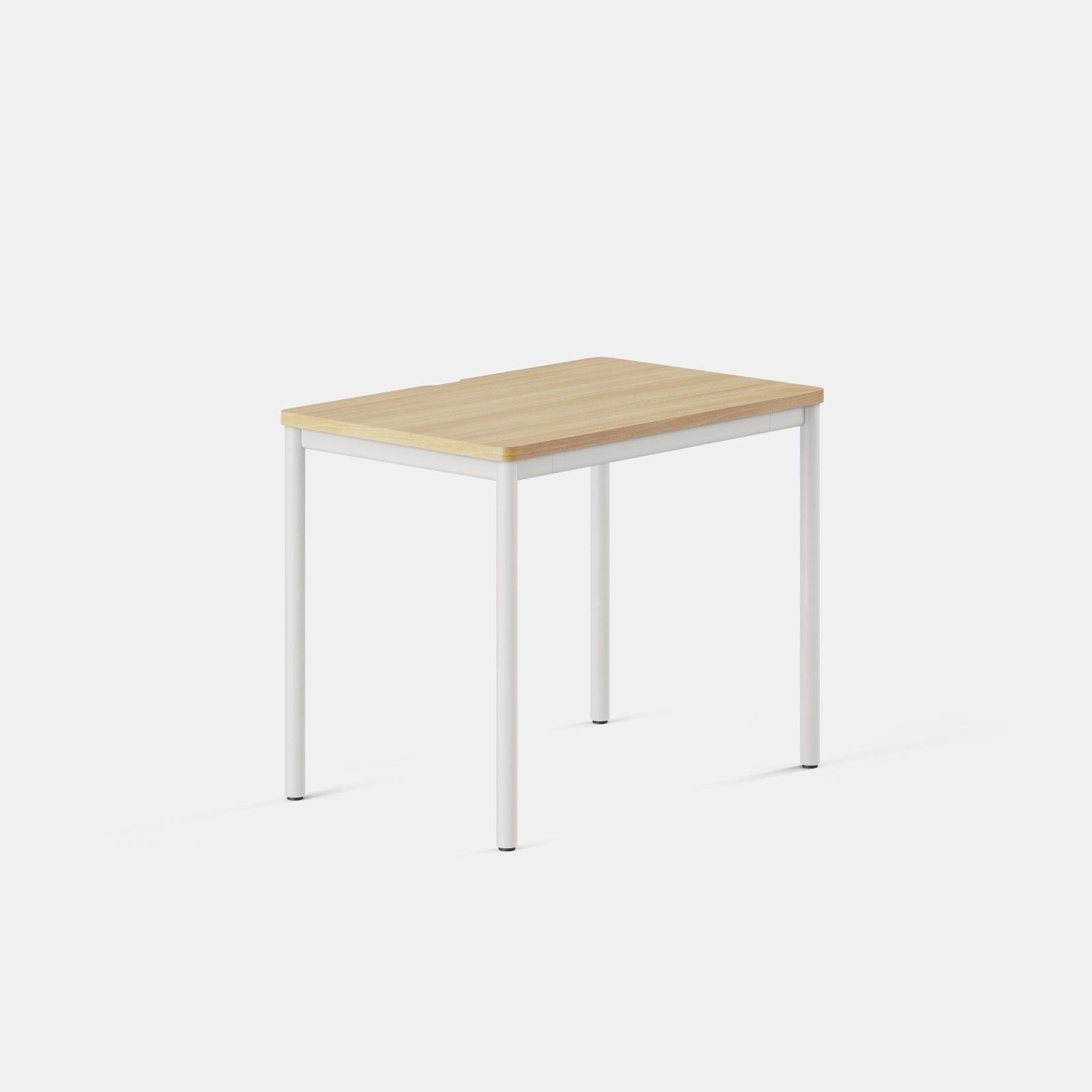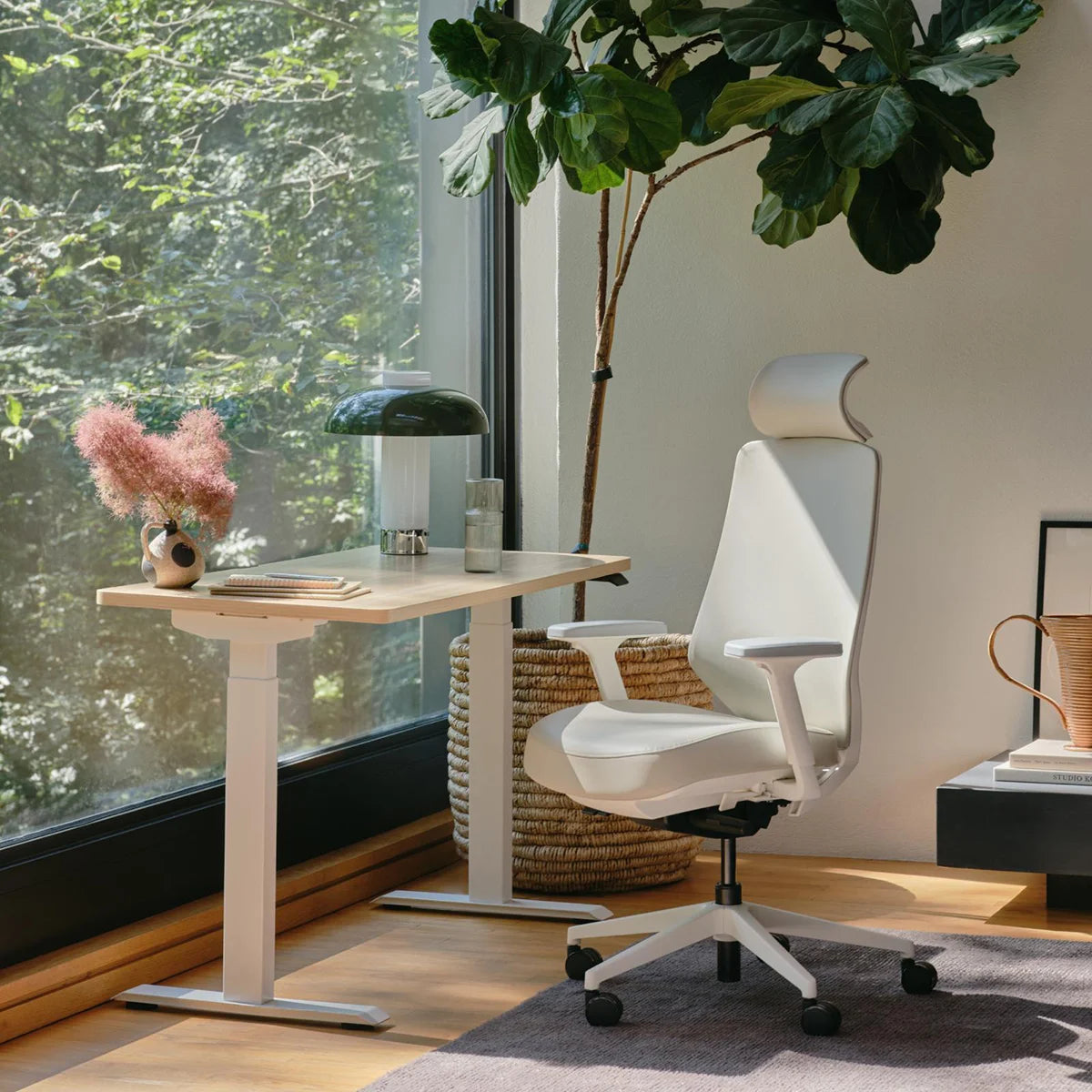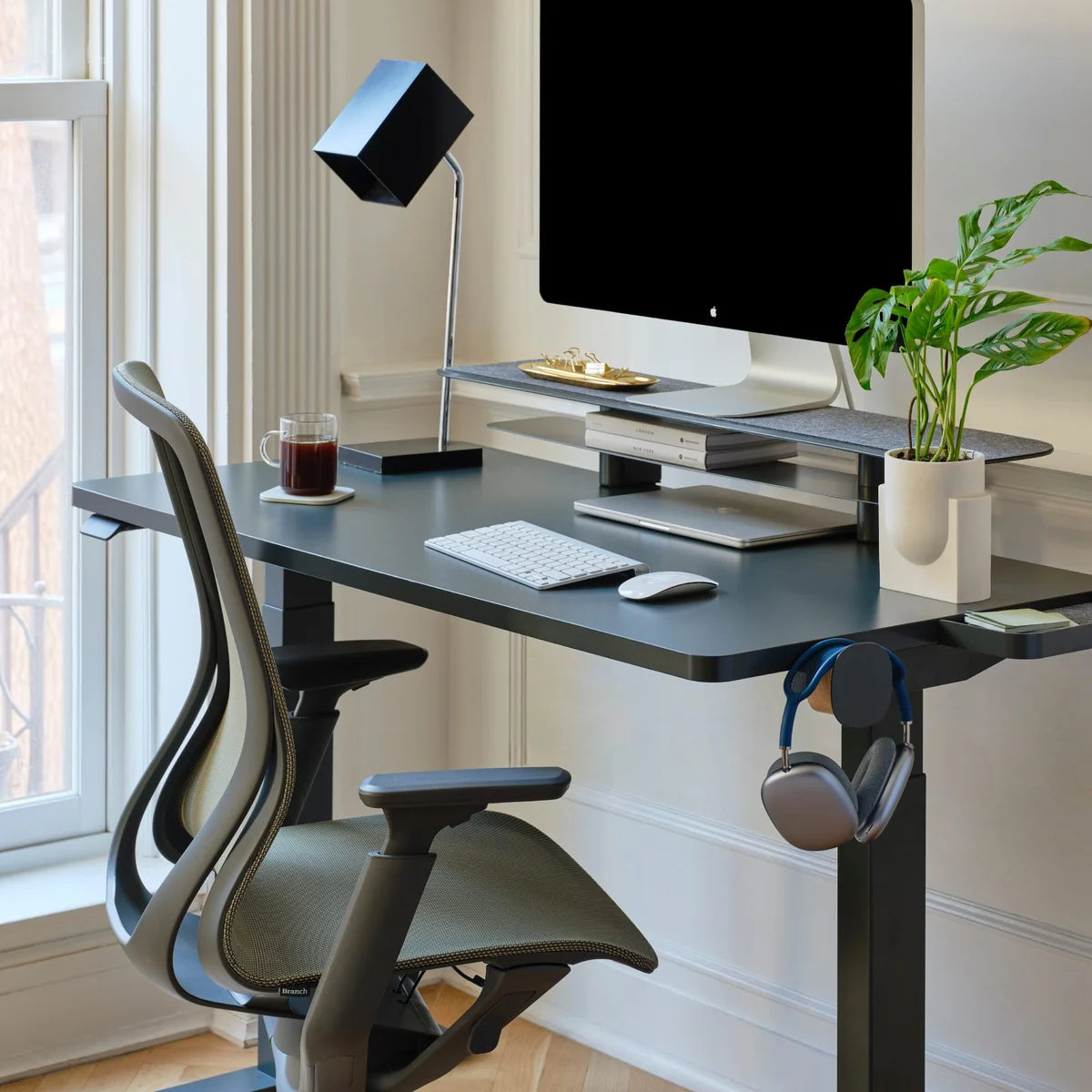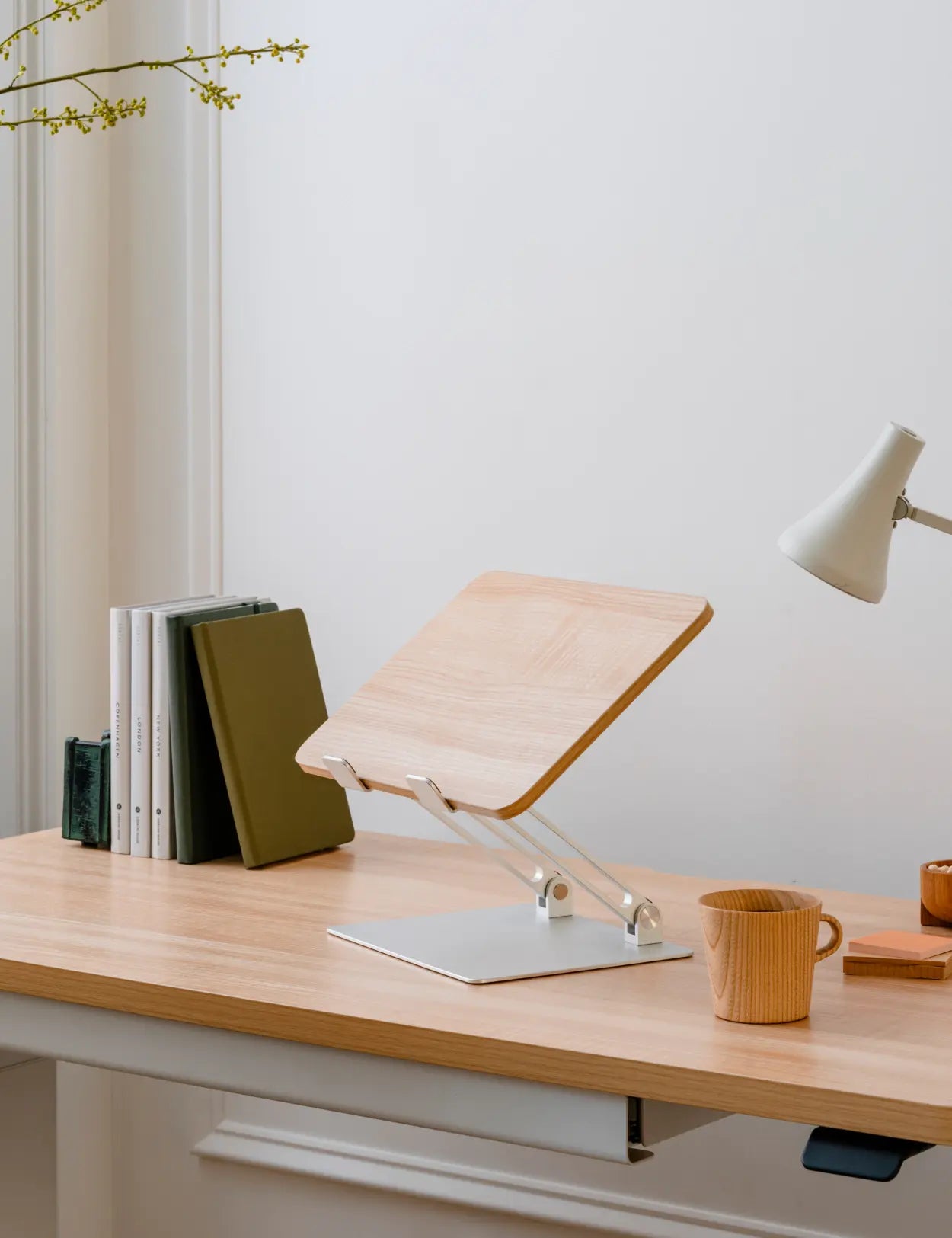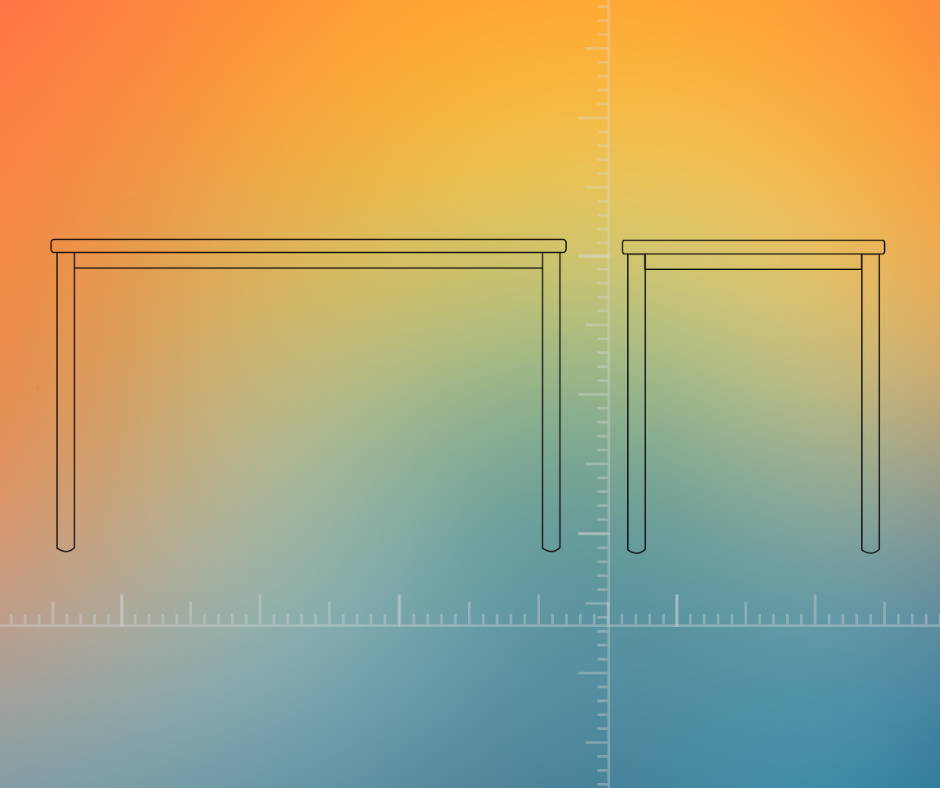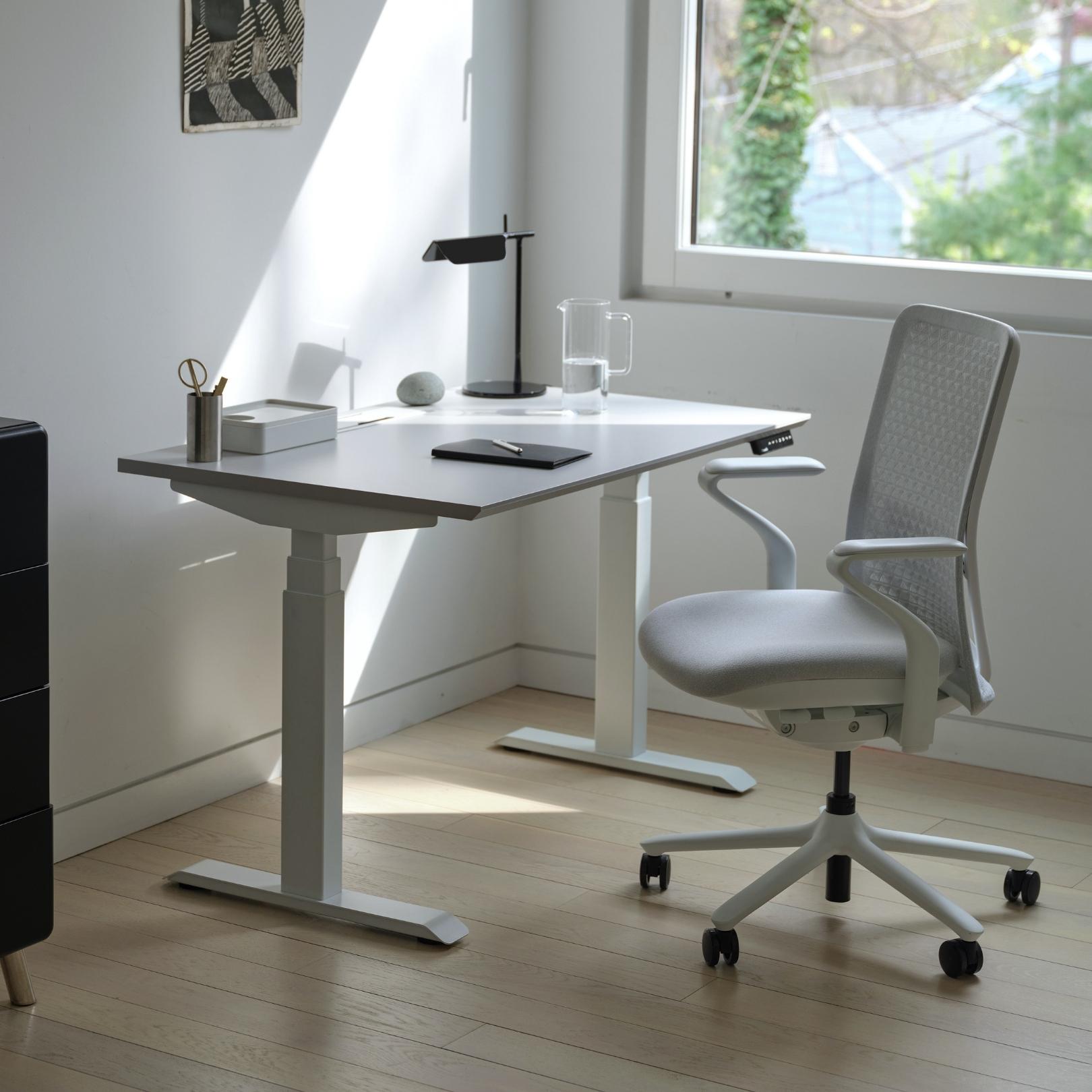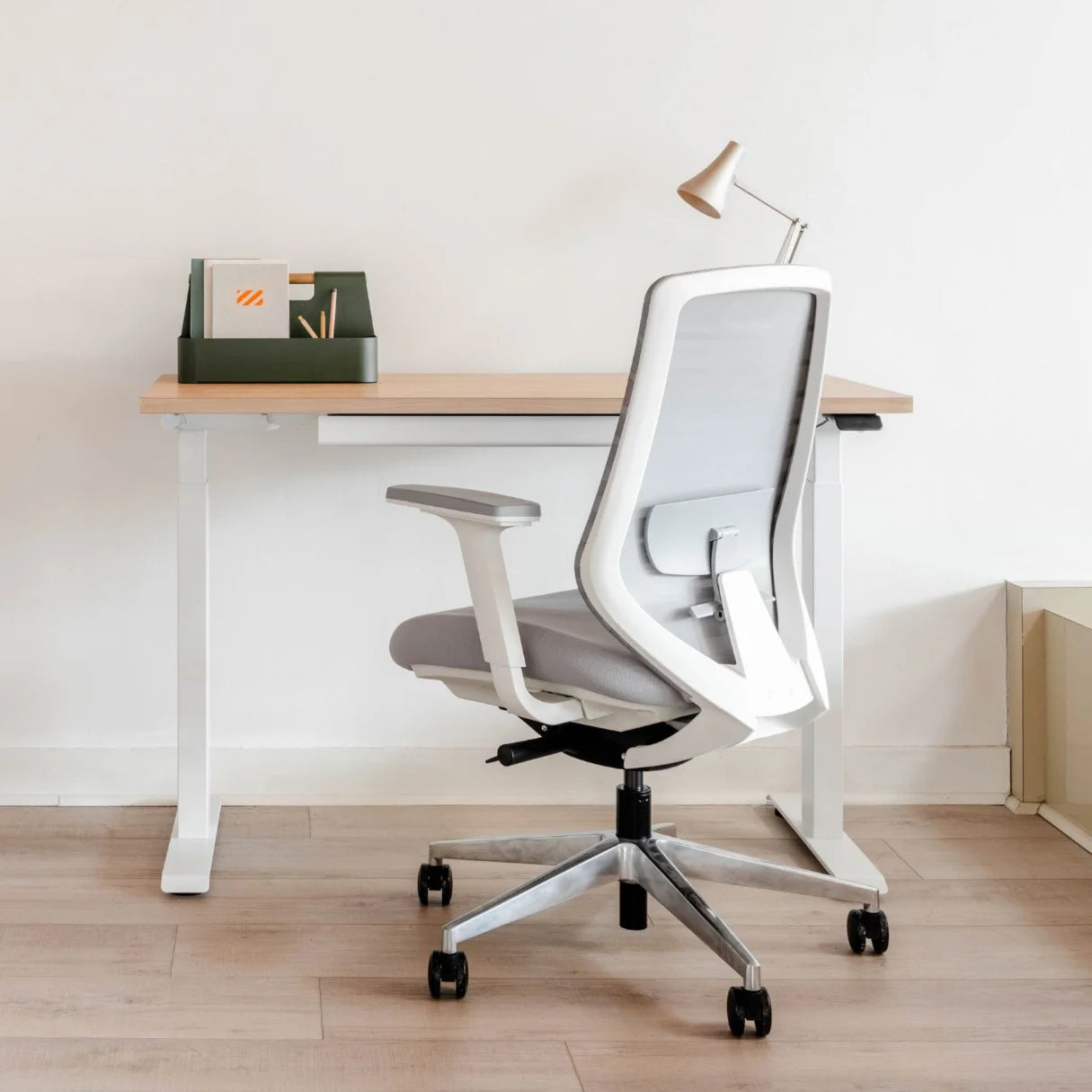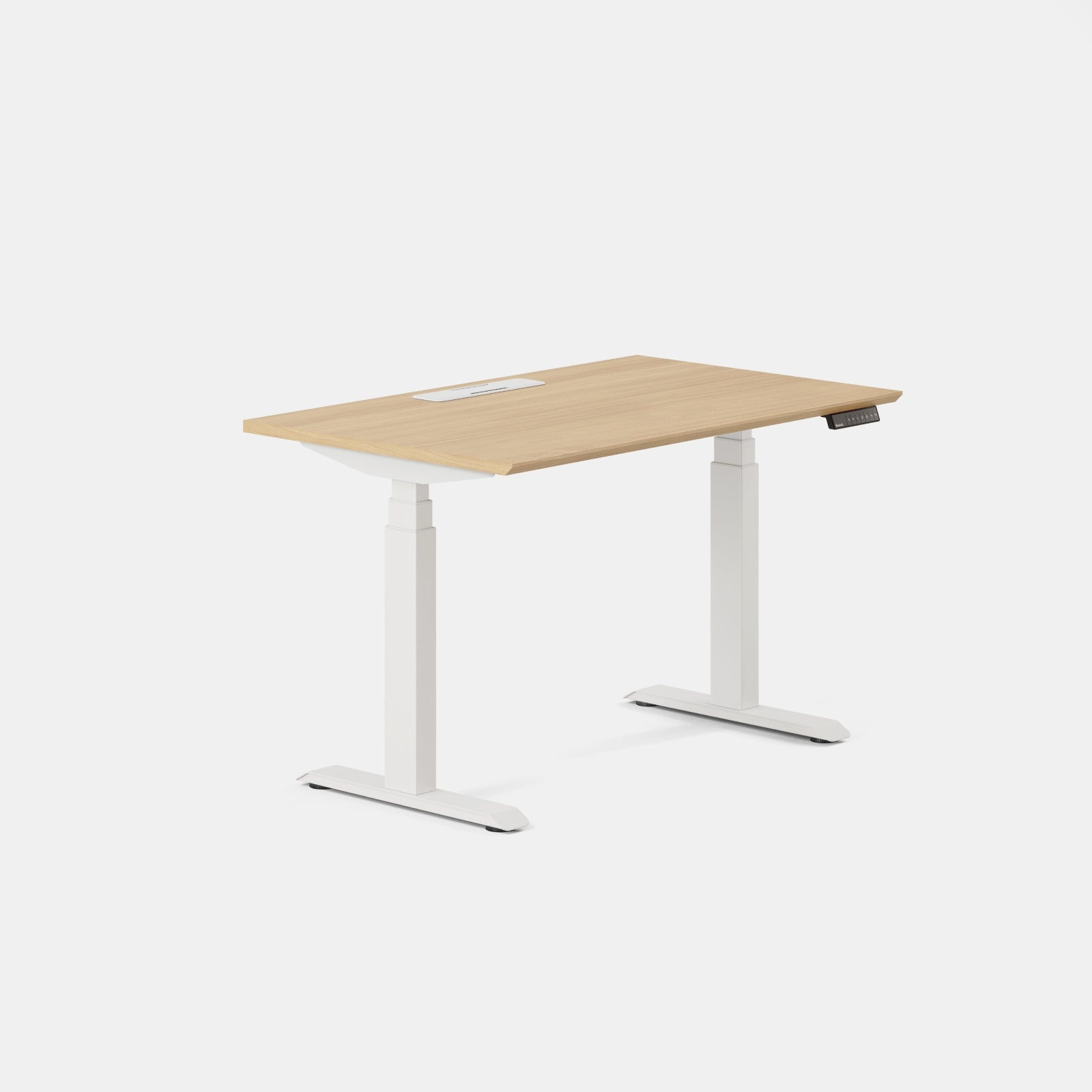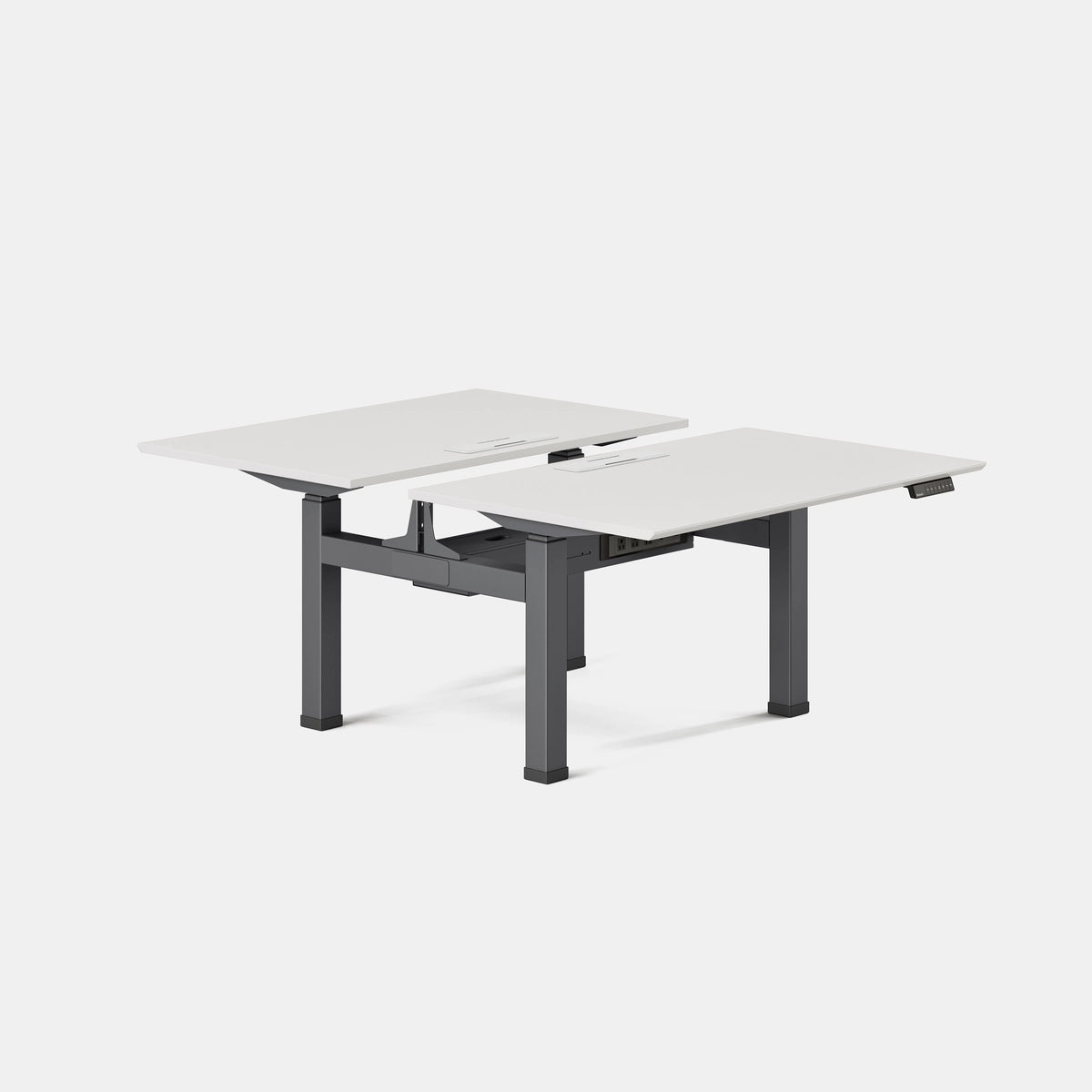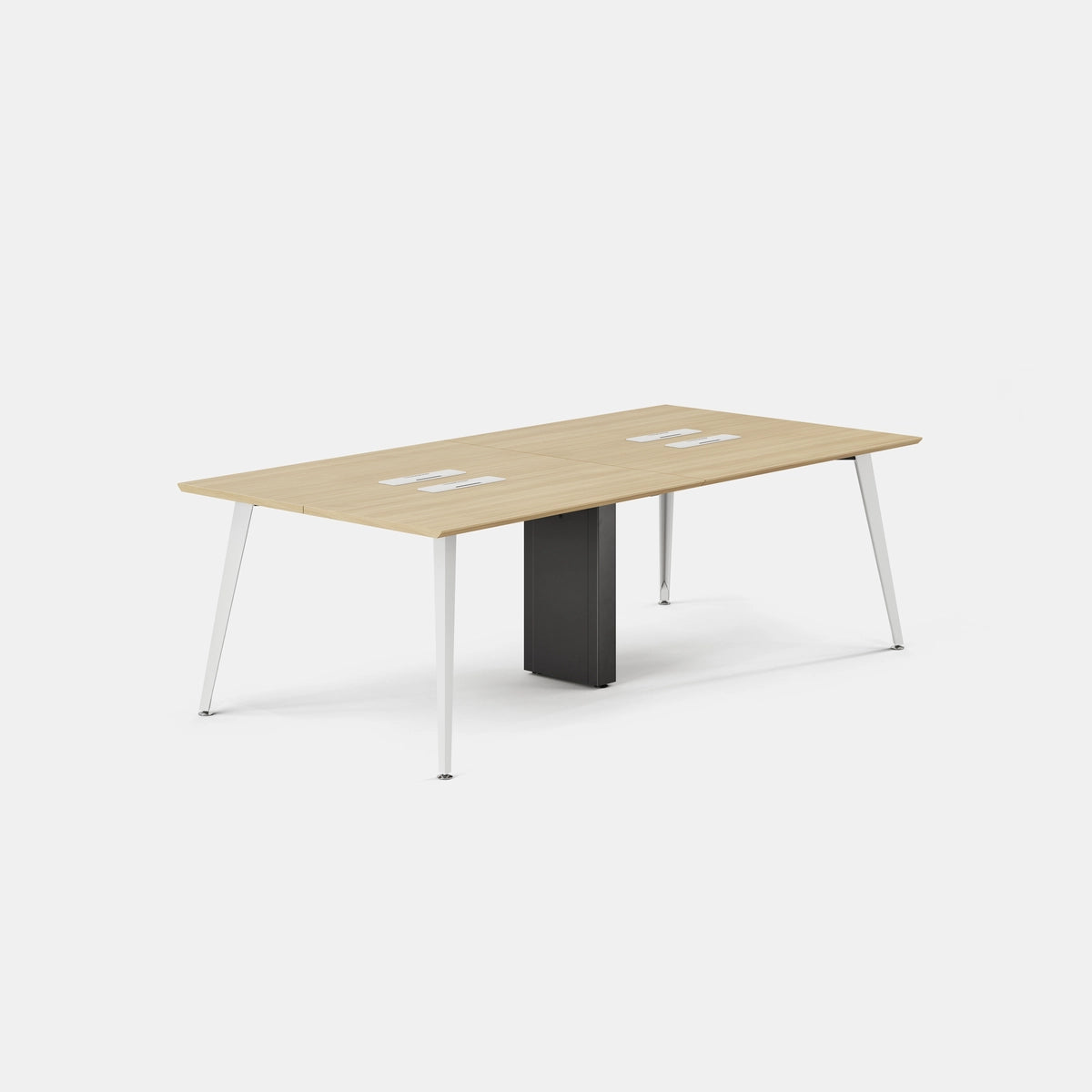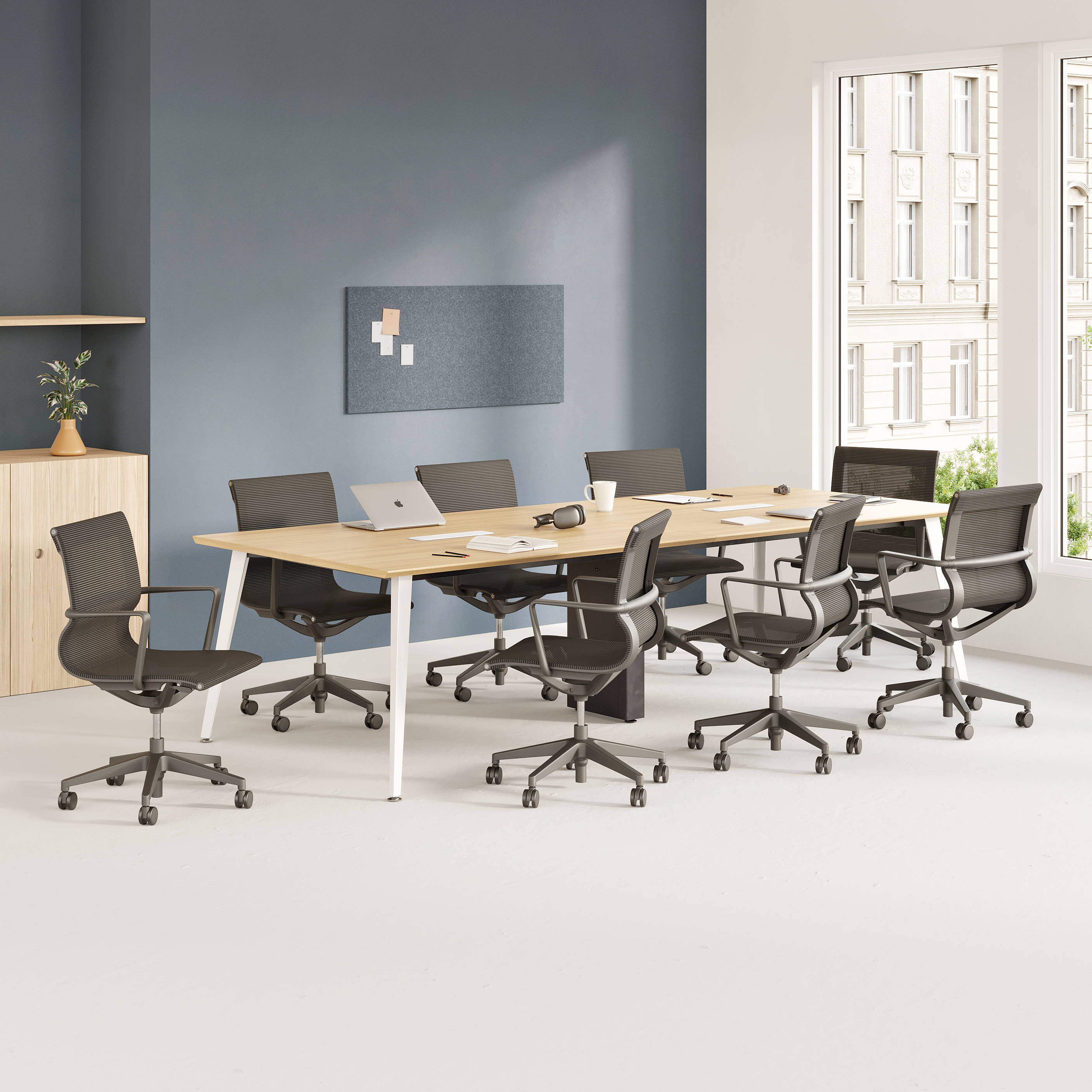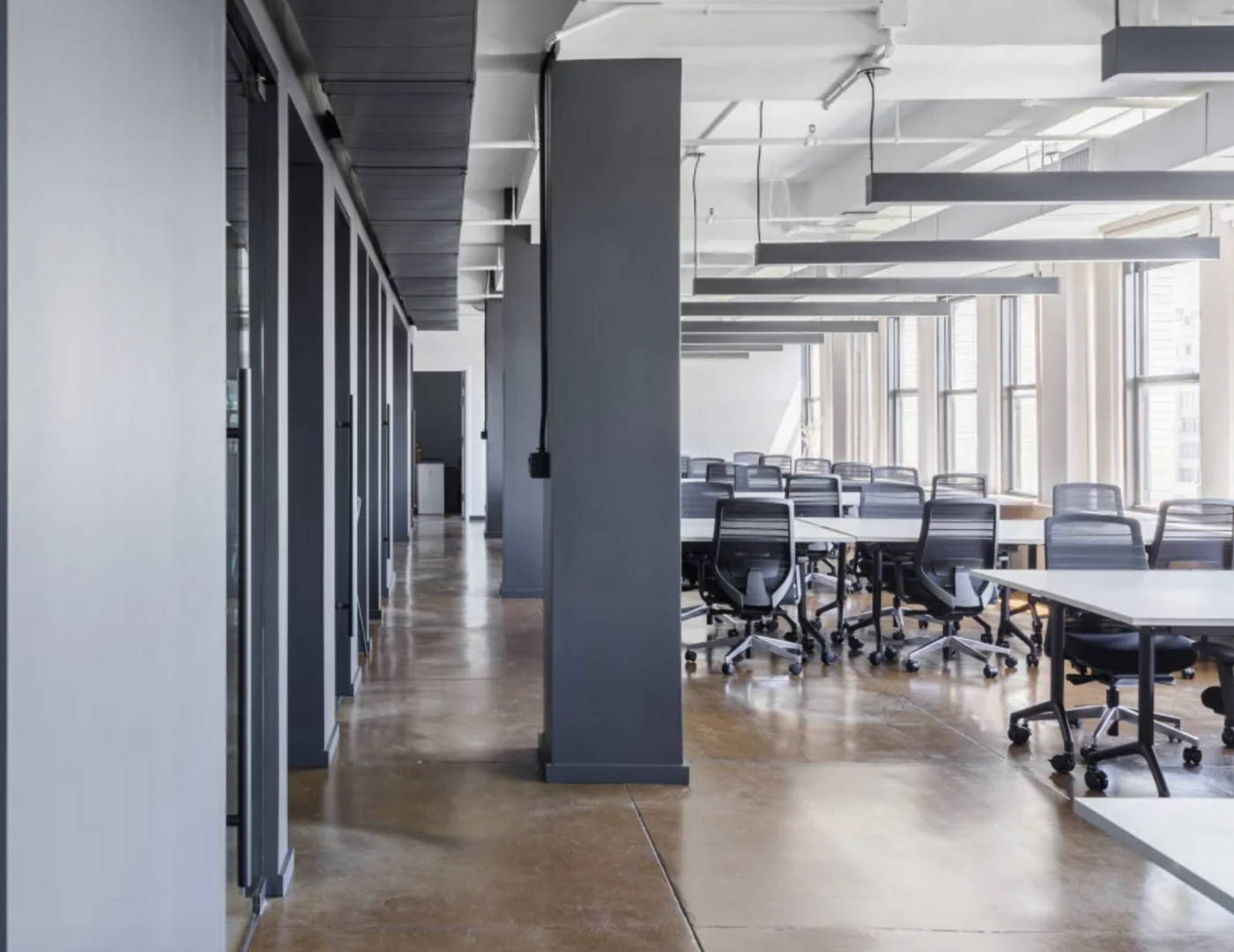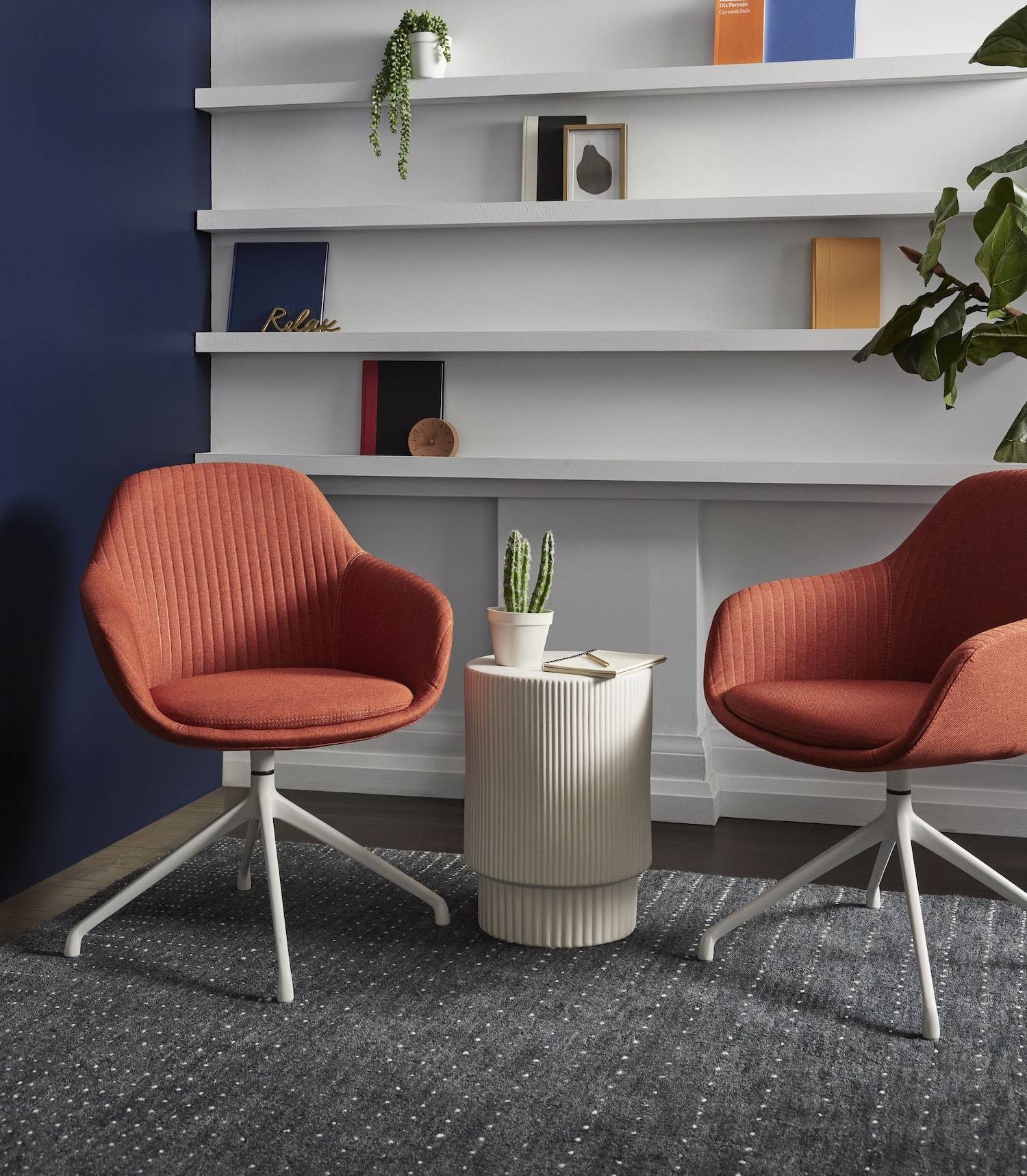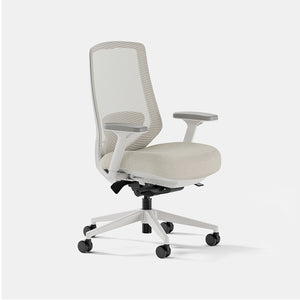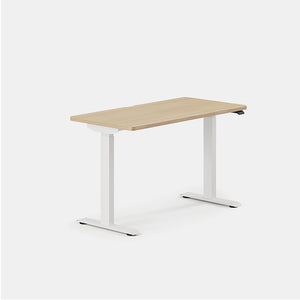In the ever-evolving landscape of modern work, where functionality and comfort converge, the dimensions of our workspace are significant. However, it can be difficult to navigate the vast options of office desks and create an environment that fosters productivity and well-being.
In this guide, we’ll dive into the art of crafting an office space that seamlessly aligns with the nuances of our work life. From there, we will look at ergonomics, aesthetics, and personalized efficiency.
How Do Desk Dimensions Contribute to Workspace Ergonomics?
Ergonomics, a nuanced science tailoring workspaces to human needs, is a foundational element that shapes our daily work experiences. The design of our workspace profoundly influences our physical well-being and productivity.
Let's take a close look at how something as simple as the dimensions of your desk can impact your office and daily routine.
Promoting Natural Movements
Desk dimensions play a crucial role in facilitating natural movements within your workspace. Optimal dimensions allow you to shift, stretch, and move effortlessly, contributing to an environment that minimizes the risk of stiffness or discomfort.
Mitigating Physical Strain
Thoughtful consideration of factors like desk height, legroom, and the distance between key elements is essential in ensuring that desk dimensions soothe physical strain. Ergonomically designed desks support a healthy and sustainable approach to work.
Enhancing Focus and Productivity
Well-designed desk dimensions contribute to minimizing distractions and enhancing focus within the workspace. The organization of an environment that nurtures concentration amplifies productivity, showcasing the crucial role of desk dimensions in creating an optimal workspace.
What Are the Standard Dimensions for Single Desks?
In the quest for an ideal office setup, understanding the standard dimensions for single desks is pivotal. Let's look into the specifics, exploring the key factors that define the standard dimensions for single desks and their impact on the overall office environment.
Surface Area
The primary consideration in single desk dimensions is the surface area which is the space available for your work tasks. Typically, a standard single desk has a surface area ranging from 36 to 72 inches in width and 24 to 36 inches in depth.
If you're simply looking for a desk to hold a laptop and some knick knacks, a 36″ x 24″ desk should be the perfect size, like the Daily Desk. If you're looking for something to hold two monitors, a keyboard and mouse, as well as other accessories, you'll want a desk that's around 60″ x 30″.
Desk Height
Desk height is a critical factor influencing comfort and ergonomics. Standard desk heights range from 28 to 30 inches.
This ensures that the desk aligns with ergonomic principles, allowing users to maintain a comfortable posture during work. An appropriately sized desk height prevents strain on the neck and shoulders, promoting a more pleasant and productive work experience.
Legroom and Clearance
Consideration of legroom and clearance is essential in determining the usability of a single desk. The standard legroom height, the space between the desk surface and the bottom of the desk, ranges from 24 to 30 inches.
Additionally, providing sufficient clearance beneath the desk ensures comfort, accommodating chairs and allowing users to move their legs freely. These dimensions prevent a cramped feeling, allowing users to sit comfortably without restrictions.
Drawer and Storage Dimensions
For desks with built-in storage, understanding drawer dimensions is crucial. Standard dimensions for drawers typically range from 2 to 12 inches in height, depending on the desk type.
Storage cabinets or shelves may have varying dimensions based on the design. A well-designed storage system ensures that documents, supplies, and personal items are organized and easily accessible, enhancing overall workspace efficiency.
Customization and Variations
While standard dimensions offer a guideline, the beauty of single desks lies in their adaptability. Many manufacturers offer variations in width, height, and depth to accommodate individual preferences.
Adjustable height desks provide flexibility for users who prefer a personalized height setting. The ability to tailor the desk to individual preferences ensures that the workspace aligns perfectly with the user's requirements.
Understanding the standard dimensions for single desks helps to create a workspace that seamlessly integrates with your needs, promoting comfort, and optimizing functionality. As you explore the vast array of single desk options, being informed about these dimensions will empower you to make choices that align with your work styles and preferences.
What Are Adjustable Desks and Their Dimensions?
The paradigm of office furniture has evolved, and adjustable desks stand at the forefront, offering a dynamic solution for modern workspaces. Understanding the dimensions of these adaptable workstations is important if you’re seeking a customizable and ergonomic work experience.
Versatility in Height Adjustments
Adjustable desks, often referred to as sit-stand desks, boast a defining feature which is the ability to customize height according to individual preferences. The range of height adjustments typically spans from 28 to 46 inches.
This versatility caters to diverse user needs, allowing seamless transitions between sitting and standing positions throughout the workday. Our own adjustable standing desk measures 26 to 52 inches tall.
Desk Surface Dimensions
While the primary focus of adjustable desks is on height, the surface dimensions play a crucial role. This variable size allows ample space for work essentials, ensuring that users can maintain a clutter-free and organized workspace even when transitioning between sitting and standing. Our Standing Desk comes in two varieties, one that is 48 inches in width and another that is 60 inches in width, while the Duo Standing Desk comes in a smaller 36 inch version.
Stability and Weight Capacity
As the dimensions of adjustable desks vary, stability and weight capacity become crucial considerations. The stability of an adjustable desk is influenced by factors like the materials used and the design of the frame.
Weight capacity, ranging from 150 to 400 pounds, ensures that the desk can safely support the user's equipment, including computers, monitors, and other office essentials.
Integration of Technology
Adjustable desks often integrate technology for a seamless user experience. Built-in features such as programmable height presets, USB charging ports, and cable management contribute to the functionality of these desks. The thoughtful incorporation of technology aligns with the modern workspace's demand for convenience and connectivity.
Customization Options
One of the defining aspects of adjustable desks is their customization options. Users can choose from various styles, materials, and finishes to align with their aesthetic preferences. Additionally, some models offer optional accessories such as monitor arms, keyboard trays, and desk organizers, providing users the flexibility to tailor the desk to their specific needs.
How Do You Know if a Desk Fits You?
Selecting the right desk is crucial for creating a comfortable and productive workspace. The question becomes, how do you know if a desk truly fits you?
Several key factors contribute to finding the perfect match between you and your desk.
Ergonomic Alignment
A desk that fits you aligns with ergonomic principles. Check the height of the desk to ensure that, when sitting, your arms form a 90-degree angle when resting on the surface. This promotes proper posture, reducing the risk of strain on your neck and shoulders.
An adjustable desk, allowing you to switch between sitting and standing, adds an extra layer of customization for ergonomic alignment.
Comfortable Legroom
Legroom is a critical aspect of desk comfort. Ensure that there's sufficient space beneath the desk for your legs to move freely. A desk that fits allows you to sit comfortably without feeling cramped, contributing to a more relaxed and focused work experience.
Appropriate Surface Area
Consider the surface area of the desk in relation to your work requirements. Whether you need space for a computer, documents, or other work essentials, the desk should provide ample room without feeling cluttered. A well-fitted desk shouldn't make you stretch your body or arms in werid ways to grab or achieve the things you need.
Personalized Dimensions
Everyone is unique, and so are their preferences. A desk that fits you offers customization options for dimensions.
Whether you prefer a compact desk for a cozy corner or a spacious surface for expansive projects, having the freedom to personalize dimensions ensures that your desk caters to your specific needs.
What Are Considerations for Collaborative Spaces?
Collaborative spaces are dynamic environments where individuals converge to share ideas and work collectively. Explore the optimal dimensions for collaborative spaces in this section. We’ll break down the intricacies of fostering a harmonious and functional setting that encourages teamwork and creativity.
Balancing Individual and Shared Workspace
In collaborative spaces, striking a balance between individual workstations and shared areas involves a thoughtful layout that accommodates both individual desks and communal zones. This balance ensures that team members have dedicated spaces for focused tasks while fostering an open atmosphere for collaborative endeavors.
Flexible Seating Arrangements
Flexibility is key in optimizing collaborative spaces. The best dimensions allow for various seating arrangements, from clustered desks to open seating configurations. This adaptability enables teams to rearrange the space based on the nature of their projects, fostering a dynamic and responsive environment.
Utilizing Shared Resources
Collaborative spaces often feature shared resources like whiteboards, project boards, or communal work surfaces. A workspace will good dimensions will cater to the efficient use of these resources with adequate space around shared elements.
This ensures that multiple team members can access and contribute to collaborative tools simultaneously, promoting a fluid exchange of ideas and encouraging active participation.
Incorporating Breakout Areas
Collaborative spaces often include breakout areas for impromptu meetings or casual discussions.
The dimensions of a workspace should ensure that breakout areas are strategically placed, providing a relaxed and informal setting without compromising the overall flow of the workspace. These zones encourage spontaneous interactions and foster a sense of camaraderie among team members.
Wrapping Up
The right desk plays a pivotal role in shaping a productive and comfortable workspace. Whether opting for standard dimensions, adjustable features, or customization, the desk's ergonomic alignment, legroom, and surface area are critical considerations.
Personalization options, such as adjustable height and tailored dimensions, further contribute to a workspace that caters to your requirements. Beyond functionality, the aesthetic integration of the desk into your office environment adds a finishing touch.
In essence, the process of choosing a desk involves a careful balance between form and function. Whether for collaborative spaces, small teams, or individual use, the dimensions of the desk play a crucial role in fostering a workspace that supports your work habits and enhances overall well-being.
Sources:
Ergonomics - StatPearls -| NCBI Bookshelf
The Power of Good Posture | RUSH
Effects of a Workplace Sit–Stand Desk Intervention on Health and Productivity | NIH
7 Benefits of Improved Posture and How to Achieve It | USAHS
Contents

Need help designing?
Take our quiz for personal recommendations on the right Branch products for your workday.Subscribe and save
Get access to exclusive content, be the first to hear about new launches, and unlock a special discount when you subscribe to our email list.
